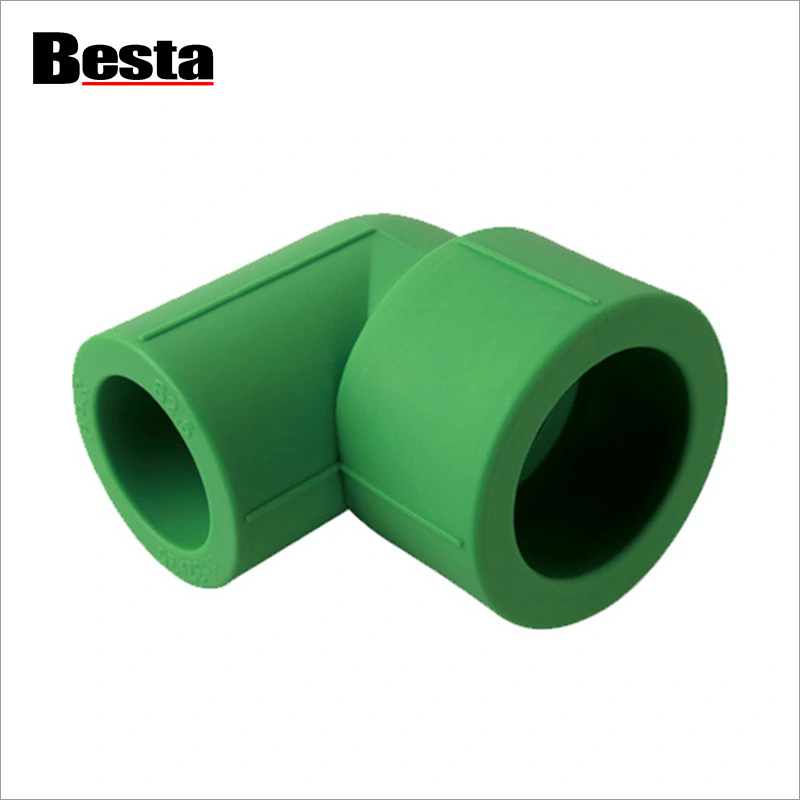PPR Plastic Fitting Reducing Elbow: The Essential Component for Efficient Plumbing Systems
2024-08-14
In the realm of modern plumbing and piping systems, efficiency and durability are key. PPR plastic fittings have become a popular choice for many applications due to their reliability, resistance to corrosion, and ease of installation. Among these, the PPR plastic fitting reducing elbow stands out as a crucial component for creating effective and flexible piping configurations. In this blog, we'll dive into what PPR plastic fitting reducing elbows are, their features, benefits, and common applications.
What is a PPR Plastic Fitting Reducing Elbow?
A PPR (Polypropylene Random Copolymer) plastic fitting reducing elbow is a type of plumbing fitting designed to connect two pipes at an angle while simultaneously reducing the pipe diameter. This fitting features a 90-degree angle bend, allowing for changes in direction within a piping system, while its reducing design enables the transition between pipes of different sizes.
Key Characteristics:
- Material: Made from high-quality PPR plastic, known for its strength, resistance to chemicals, and durability.
- Design: Incorporates a 90-degree elbow with one end having a larger diameter and the other end a smaller diameter, facilitating a size transition.
- Connection Type: Typically features a push-fit or threaded connection, making it easy to install without special tools.
Features of PPR Plastic Fitting Reducing Elbow
1. Durability: PPR plastic is resistant to corrosion, chemicals, and high temperatures, ensuring a long lifespan even in challenging environments. This makes it ideal for both residential and industrial plumbing systems.
2. Cost-Effective: Compared to metal fittings, PPR plastic fittings are generally more affordable. They offer a cost-effective solution without compromising on performance or durability.
3. Ease of Installation: The lightweight nature of PPR plastic fittings and their simple push-fit or threaded connections make installation quick and straightforward. This reduces labor time and associated costs.
4. Leak-Proof: Properly installed PPR plastic fittings create a tight seal that minimizes the risk of leaks, ensuring a reliable and efficient plumbing system.
5. Temperature Resistance: PPR fittings can handle temperatures ranging from -20°C to 95°C, making them suitable for hot and cold water systems.
6. Flexibility: The reducing elbow allows for flexible piping configurations, enabling efficient use of space and adaptation to various installation requirements.
Benefits of Using PPR Plastic Fitting Reducing Elbow
1. Improved Flow Efficiency: By smoothly transitioning between different pipe sizes and changing direction, the reducing elbow helps maintain efficient water flow and reduce pressure loss.
2. Enhanced System Flexibility: The ability to connect pipes of different diameters and navigate around obstacles allows for more flexible and customizable plumbing designs.
3. Long-Term Reliability: The resistance to corrosion and chemical damage ensures that PPR plastic fittings maintain their integrity and functionality over time, reducing the need for frequent replacements.
4. Reduced Maintenance: With fewer joints and connections prone to failure, PPR plastic systems require less maintenance compared to traditional metal piping systems.
5. Environmental Benefits: PPR plastic is recyclable, making it a more environmentally friendly option compared to some other materials used in plumbing.
Common Applications of PPR Plastic Fitting Reducing Elbow
1. Residential Plumbing: Used in home water supply systems to navigate around walls, cabinets, or other obstacles, and to connect pipes of different sizes.
2. Commercial Buildings: Ideal for commercial plumbing systems, including office buildings, schools, and hospitals, where durable and reliable fittings are required.
3. Industrial Applications: Suitable for industrial piping systems that handle various fluids and chemicals, where resistance to corrosion and high temperatures is crucial.
4. Agricultural Systems: Employed in irrigation systems to connect pipes and manage water flow efficiently in agricultural settings.
5. HVAC Systems: Used in heating, ventilation, and air conditioning systems to route pipes and ducts effectively.
Installation Tips
1. Preparation: Ensure that the pipes and fittings are clean and free of debris before installation. This helps achieve a secure and leak-proof connection.
2. Use Proper Tools: For push-fit connections, ensure that the pipes are cut cleanly and squarely. For threaded connections, use appropriate thread sealant to prevent leaks.
3. Check Alignment: Properly align the pipes and the reducing elbow to avoid undue stress on the fitting and ensure a smooth transition between pipe sizes.
4. Verify Seal: After installation, test the system for leaks by pressurizing the pipes and checking all connections carefully.
Conclusion
The PPR plastic fitting reducing elbow is a vital component in modern plumbing systems, offering a reliable and efficient solution for connecting pipes of different sizes and navigating around obstacles. Its durability, cost-effectiveness, and ease of installation make it a preferred choice for a wide range of applications, from residential plumbing to industrial systems.
By understanding the features, benefits, and applications of PPR plastic fitting reducing elbows, you can make informed decisions for your plumbing projects and ensure a robust and efficient system. Whether you’re a professional plumber or a DIY enthusiast, incorporating PPR plastic fittings into your setup will enhance performance and reliability, making your plumbing solutions more effective and long-lasting.



